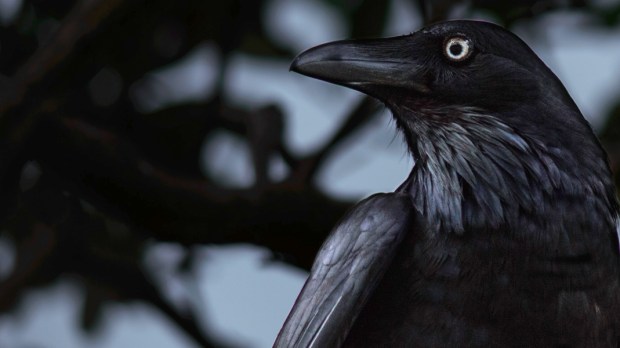Lenten Campaign 2025
This content is free of charge, as are all our articles.
Support us with a donation that is tax-deductible and enable us to continue to reach millions of readers.
One of the most popular poems at the Halloween season is Edgar Allen Poe’s “The Raven.” In the work, an unnamed narrator is grieving the loss of his beloved Lenore when he encounters a raven, which flies into his chambers and at times seems to mock the narrator with the only word it knows how to say, “Nevermore.” At one point the narrator muses:
Then, methought, the air grew denser, perfumed from an unseen censer Swung by Seraphim whose foot-falls tinkled on the tufted floor. “Wretch,” I cried, “thy God hath lent thee—by these angels he hath sent thee Respite—respite and nepenthe from thy memories of Lenore …”
While many see this as the narrator questioning whether or not there is something supernatural about the raven, it is actually a biblical reference.
In the book of Kings, God sends a plague upon the people to punish them for idolatry, but chooses to save the prophet Elijah. God instructs Elijah to travel to the Cherith Valley, where he is fed by ravens, which bring him bread and meat twice a day for nearly a year. Poe’s narrator was perhaps versed enough in biblical stories that for a moment he considered whether or not the bird was there to care for him and release him from his grief.
Ravens are present quite a bit in the Bible. In fact, they’re the first bird mentioned at all. When Noah wanted to see if the flood was subsiding, he famously released a dove, which brought back an olive branch, but first, he sent out a raven, which did not return. While ravens are very intelligent birds and can be trained, they can also subsist off of just about any meat or berries, which might explain why it did not come back to Noah.
Ravens can hunt but they are primarily scavengers with the ability to identify the scent of death from great distances; they will congregate in packs known as “conspiracies” or “unkindnesses.” Conspiracies of ravens gathered on ancient battlefields to pick at the dead, a process which always begins with the eyes. This is mentioned in the book of Proverbs, 30:17:
“The eye that mocketh at his father, and despiseth to obey his mother, the ravens of the valley shall pick it out, and the young eagles shall eat it.”
This passage refers to the ancient custom of leaving the remains of those executed to be disfigured by birds and the elements, and suggests that those who are disobedient or disrespectful to their parents may meet a similarly sad end.
Leviticus classifies the raven as an unclean animal, probably because of its scavenging, but — perhaps because of their helpfulness to Elijah — God cares for them. In Luke 12:24, Jesus says:
“Notice the ravens: they do not sow or reap; they have neither storehouse nor barn, yet God feeds them. How much more important are you than birds!”
More examples of God assisting the ravens come from the Psalms — “The Lord giveth to the beast his food, and to the young ravens which cry” — and another in Job: “Who provideth for the raven his food? When his young ones cry unto God, wandering for lack of meat.”
The raven has long been a symbol for impending death, but the Bible paints a different picture of them. In the Song of Solomon, one who is beautiful is described with hair “bushy, and black as a raven,” suggesting that the color of a raven is something to be desired.
In light of their helpfulness and the care which God extends towards them, ravens are perhaps not as scary as they are popularly believed to be. As far as their place in the Halloween pantheon of fright, they shall be included, “nevermore.”

